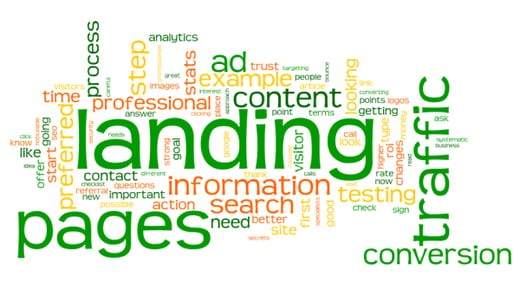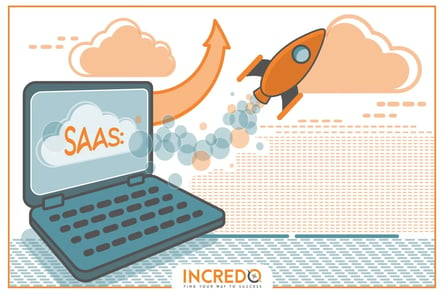SaaS Security: 15 Ways to Avoid Risks

SaaS Security: 15 Ways to Avoid Risks
SaaS has become the most common software delivery model in the world, and this trend isn’t going to decline anytime soon. SaaS applications are so popular for a good reason. First, users don’t need to invest in their own storage, server rooms, and backups to use such software. Secondly, such software costs less than the traditional model. Cloud-based software is very convenient for the end-user and profitable for the developer. However, storing a lot of customer data in the cloud means that SaaS companies become a perfect target for hackers. In fact, 66% of IT experts agree that security is the main concern when it comes to cloud technologies. Security breaches are too common to ignore. For instance, last year, 4.1 billion people had their personal records exposed because of security breaches. All tech companies understand the importance of cybersecurity for their success, which is a reason why the information security market is expected to reach $170.4 billion by 2022. However, the speed of business constantly grows, and many SaaS companies may find themselves prioritizing quick release to the market over the safety of their solutions in the market. The worst thing about security threats is that the effect of breaches is immediate, and even a timely reaction might not enable companies to minimize the consequences. Therefore, preventing risks is the best thing you can do. Here are some tips on how you can avoid them.
SaaS Security: Best Practices
Educate teams
First of all, you should provide security training for teams, no matter what product they’re working on. A great solution is to implement two-factor authentication for all logins. You can edit permissions and set up user-specific access by using a provision for role-based access features. The high level of security awareness alone can help you prevent some common security threats, such as social engineering. It can also help you prevent phishing attacks. Your employees should stick with a proactive approach, and you can achieve it by keeping them up to date about the security policies of your organization.
Hire dedicated security resource
Even if your employees are perfectly educated about possible security threats, they may not be able to deal with some attacks. It’s important to have security engineers that would focus on security tasks. Not only will it enable you to deal with such tasks more effectively, but it will also help you ensure accountability.
Implement data deletion policy
You should clearly define where your customers’ data is stored, how it’s used, and how long it can be kept. “Making sure that customer data is deleted regularly will help you minimize the consequences of breaches. Moreover, quite often, it’s a legal requirement,” notes Kristina Winters, a security expert at a writing services review website Best Writers Online. Data deletion should be implemented accurately and in a timely manner, making sure that relevant data is properly maintained.
Secure deployment
Deployment can take place via a SaaS vendor or on a public cloud. If you choose to use the services of well-known cloud providers like Amazon or Google, they will take care of many security tasks, including data security, network security, and data segregation. If you choose self-deployment, you should do proper research and pay particular attention to safety. We recommend that you always consider the security settings recommended by well-known public cloud vendors when deploying your software on a public cloud.
Protect sensitive data
![]() Protecting your database and the main application is extremely important if you want to make sure that your customers’ sensitive data is safe. We recommend that you always monitor and detect common security threats so that you can act quickly when you’re attacked. A good approach is to also protect your API from possible injection attacks.
Protecting your database and the main application is extremely important if you want to make sure that your customers’ sensitive data is safe. We recommend that you always monitor and detect common security threats so that you can act quickly when you’re attacked. A good approach is to also protect your API from possible injection attacks.
Integrate real-time protection
It will be much easier to differentiate between attacks and legitimate queries if you incorporate protection logic into the code, ensuring real-time monitoring. This approach can help you protect your software from account takeovers, XSS attacks, and SQL injections.
Incorporate security in the SDLC process
We recommend that you incorporate security in all stages of the software development lifecycle. This way, you’ll be able to review the security situation at every step. Your application will be stronger, and you’ll be able to use more secure coding practices. If you enforce security guidelines, you’ll be more likely to protect the code from security bugs. Besides, you can use various static application security testing tools (SAST) to analyze the source code and detect vulnerabilities.
Protect your infrastructure
It’s also important to protect the infrastructure in order to secure business continuity. “Security groups and firewalls, as well as backups, can help you ensure business continuity even if you become a victim of DoS attacks or ransomware attacks,” notes Fred Cobb, a security expert at a writing services review website Online Writers Rating. We also suggest that you maintain logs to constantly monitor any suspicious activities.
Educate your customers
Given that protecting your customer should be your main priority, we recommend that you educate not only your employees but also customers. Your customers should be able to proactively approach account takeover attacks so make sure to provide them with the necessary information. For instance, you can send detailed safety instructions as a newsletter. You can also enforce two-factor authentication to make your app more secure.
Ensure compliance of certifications and audits
 We recommend that you take into account certifications like PCI DSS. Such certifications can help protect sensitive data. SOC 2 Type II is also a very useful regulatory compliance that helps companies ensure maximum security. Usually, SaaS providers have to comply with various norms and deal with detailed audits to make sure that their customers’ data is securely stored, transferred, and processed.
We recommend that you take into account certifications like PCI DSS. Such certifications can help protect sensitive data. SOC 2 Type II is also a very useful regulatory compliance that helps companies ensure maximum security. Usually, SaaS providers have to comply with various norms and deal with detailed audits to make sure that their customers’ data is securely stored, transferred, and processed.
Have a backup plan
The cloud continues to evolve, and permanent data loss becomes a more and more dangerous threat. Therefore, you must make sure to keep a secure backup of all the important data. IT specialists can distribute applications and data across different zones to increase protection. Teams can also make daily backups and use offsite storage so that they can ensure disaster recovery.
Use encryption
Clou d encryption should be one of the most important points in your SaaS security checklist. It enables you to store any data and text in your cloud storage after transforming it by using encryption algorithms. Talk to your provider to learn how the data is managed. To make sure that your data is protected before it leaves your company, you can encrypt the network edge. This way, you’ll secure the movement of data in the cloud. We also recommend that you always keep the keys that enable you to decipher and encrypt your information. If you have both of these keys, all information requests will inevitably involve the owner, even if your information is stored at a third-party provider.
Use strong passwords
When it comes to SaaS security, standard passwords are not the best option. You must make sure that your passwords are actually difficult to guess. Keep in mind that as much as 90% of passwords can be cracked in a matter of seconds. There was a time when passwords with 8+ characters, special symbols, mixed-case letters, and at least one number were considered reliable. However, hardware and software used by hackers get improved constantly so passwords must get more and more complicated to remain effective. Of course, remembering long passwords might be a difficult task, but we recommend that you always come up with original complex passwords and never reuse them.
Control data access
How and where you store data is important, but an even more important thing is who can access it. To ensure security for SaaS applications, you should effectively manage users and know exactly who can access your data, why they need to do it, how this data is used, and what types of data these users can access. To manage the risk, you can establish access controls. Link user identities to backend directories, even when dealing with external identities. Fortunately, there is a lot of convenient and effective software that can simplify access management. For example, there are access control systems that you can install on your smartphone and manage users at any moment, no matter where you are.
Test your security
 The only way to ensure effective SaaS security is to test it regularly. Companies need to think like criminals to protect their data. One of the best solutions is penetration testing. This practice can help you detect and fix security vulnerabilities before they cause any problems. Just make sure to inform your cloud provider about a test in advance because penetration testing looks like a real attack.
The only way to ensure effective SaaS security is to test it regularly. Companies need to think like criminals to protect their data. One of the best solutions is penetration testing. This practice can help you detect and fix security vulnerabilities before they cause any problems. Just make sure to inform your cloud provider about a test in advance because penetration testing looks like a real attack.
Wrapping Up
SaaS is the most popular software delivery model because it’s convenient and cost-effective. However, given that SaaS applications are cloud-based, the security of SaaS applications becomes the main concern. SaaS providers store lots of customer data so they are a perfect target for hackers. Follow our simple advice to stay focused on security and to prevent possible attacks before they occur.
Tags:
SaaS SecurityNovember 24, 2020



Comments